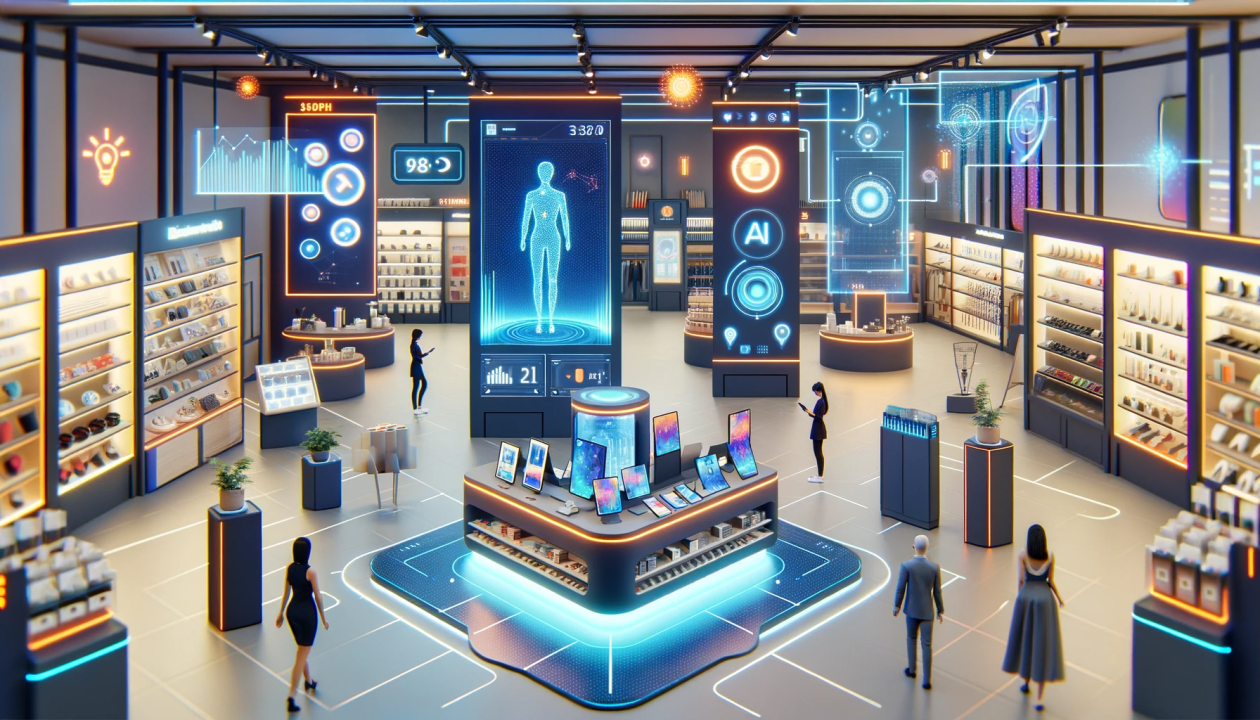Let’s just say it out loud: online shopping seems a tad monotonous. You are scrolling and clicking, praying those jeans would not fit like parachute pants. But what if you could walk into a store from your living room, pick up products, and even try them on through virtual means? Well, that’s what a virtual reality store offers, and it is changing how we shop constantly.
By 2025, brands using VR shopping platforms could see up to 30% more customer engagement. Why? Because instead of guessing sizes or colors, shoppers get to experience products firsthand. The magic of virtual reality stores does exactly that: testing the couch in your real living room or, more precisely, putting on glasses and not stepping outdoors. Let’s explain why this trend holds immense significance for the future of retail.
What Exactly is a Virtual Reality Store?
Think of it as a video game that meets your favorite mall. A Virtual Reality store is a digital space where you can explore 3D versions of products, interact with them (like rotating a vase or zooming in on fabric textures), and even chat with virtual assistants. You don’t always need fancy gear, either—many VR shopping platforms work on your phone or laptop.
Take IKEA’s app, for example. It lets you place true-to-scale furniture in your home using augmented reality (AR). No more measuring tape disasters!
Why Shoppers (and Brands) Love Virtual Reality Stores
1. Try Before You Buy, Virtually
Ever ordered a rug online that looked burgundy in photos… but arrived neon pink? VR shopping platforms fix this. Want to see how a lamp looks on your desk? Drag and drop it into your space. Curious if those sneakers match your style? Create a digital avatar to model them. It’s like having a fitting room in your pocket.
2. Shop Global, Stay Local
A VR retail store erases borders. A farmer in Italy can tour a Tokyo boutique. A mom in Dubai can explore New York’s holiday collections while her kids nap. Luxury brands like Gucci even host virtual fashion shows, so anyone with Wi-Fi gets a front-row seat.
3. Fewer Returns, Happier Customers
Here’s a win-win: when shoppers truly understand what they’re buying, returns drop by up to 30%. No more “it looked bigger online” or “the color’s wrong.” For brands, that means less wasted time and money.
4. Stories Over Sales Pitches
VR retail stores aren’t just about selling—they’re about storytelling. The North Face once let shoppers “climb” a mountain in VR to test jackets. It wasn’t just about warmth; it was about adventure. These experiences stick with people long after they log off.
How Does a Virtual Reality Store Actually Work?
Creating one isn’t as sci-fi as it sounds:
- 3D Magic: Products or stores are scanned into 3D models (like a digital twin).
- Interactive Features: Add buttons to zoom, rotate, or read reviews. Some platforms even let you chat with a live salesperson.
- Accessibility: Most VR shopping platforms work on phones, tablets, or basic VR goggles. No need for a $1,000 headset!
Companies like Limina Studios in Dubai use tools like Matterport to turn real stores into immersive digital spaces. They even add fun extras—like hovering over a dress to see its fabric details or clicking a “hotspot” to watch a demo video.
Is This for Everyone?
Virtual Reality Stores are amazing, but they’re not perfect yet:
- Costs: Setting one up can be pricey (though prices are dropping fast).
- Tech Limits: Not all phones handle AR smoothly—yet.
- The Human Touch: Some folks still want to touch fabrics or smell perfumes.
But here’s the good news: brands are mixing VR with old-school perks. For example, Walmart lets you order online after exploring a VR retail store, and then pick up items in person. Best of both worlds!
What’s Next? The Future Looks Fun
Forget Zoom meetings—soon, you might meet friends in a Virtual Reality Store to shop together (while wearing pajamas, obviously). Here’s what’s coming:
- Metaverse Malls: Digital spaces where your avatar shops with crypto.
- AI Stylists: Imagine a bot that knows your size, style, and budget.
- AR Everywhere: Apple’s Vision Pro and similar tech will make VR as common as TikTok.
Final Thoughts
Virtual Reality Stores aren’t about replacing human connection; they’re about adding convenience, creativity, and confidence to shopping. Whether you’re a brand wanting to stand out or a shopper tired of return hassles, VR shopping platforms are worth exploring.
If you’re in Dubai and curious about building your own Virtual Reality Store, check out Limina Studios. They’re experts in creating jaw-dropping 3D shopping experiences for retailers, hotels, and more—no coding skills required. From virtual showrooms to AR try-ons, they’ll make your brand feel like the future.



 Virtual Tour
Virtual Tour CGI Virtual Tour
CGI Virtual Tour Photography & Video
Photography & Video Virtual Reality
Virtual Reality Virtual Commerce
Virtual Commerce Indoor Navigation
Indoor Navigation Analytics
Analytics Avatars
Avatars Ticketing System
Ticketing System Connected Workforce
Connected Workforce Facilities Management
Facilities Management Real Estate & Architecture
Real Estate & Architecture Hospitality and Travel
Hospitality and Travel Museum and Galleries
Museum and Galleries Retail and Showrooms
Retail and Showrooms Industry 4.0
Industry 4.0 Education
Education Oil & Gas
Oil & Gas Blog
Blog Case Studies
Case Studies About us
About us Partners
Partners


















